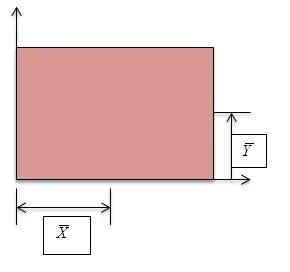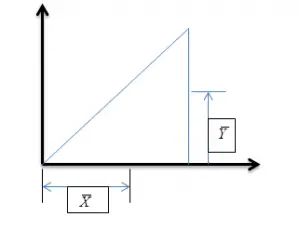A single point where the entire weight or mass of a body is concentrated is known as center of gravity of that body. Center of gravity is generally denoted by “G”.
Centroid is another related term to center of gravity. It is the centroid of plane geometrical figures like rectangle, triangle, trapezoid, circle, etc… word Centroid is used when there is only geometrical figures instead of weight or mass. Therefore, center of gravity of plane geometrical figures is termed as centroid or center of that area.
Two distances are required for each area in evaluation of center of gravity. One is from reference X-axis and the other is from reference Y-axis. These two distances are known as centeroidal distances. Centeroidal distances are represented by a bar over the coordinate axis. The X-bar () indicates the X-coordinate of the centroid which is measured in the X-axis direction from reference Y-axis. On the other hand Y-bar (
) indicates the Y-coordinate of the centroid of area which is measured in the Y-axis direction from reference X-axis. As shown in the figure below.
Methods:
centroid or Center of gravity can be determined by any of the following four methods. These methods are:
- By Geometrical Consideration
- By Method of Moments
- By Graphical Method
- By Integration Method


